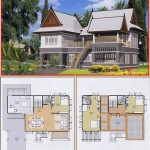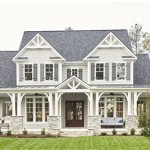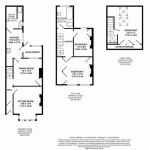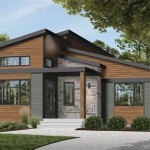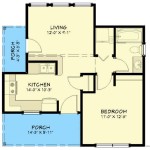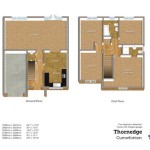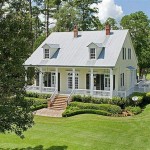Piling House Plans With Elevator And Garages: Elevating Coastal Living
Coastal living offers unparalleled beauty and tranquility, but it also presents unique architectural challenges. Designing a home on pilings, especially in areas prone to flooding or unstable soil, requires careful consideration of structural integrity, accessibility, and practical amenities. Integrating elevators and garages into piling house plans adds complexity, demanding a strategic approach to ensure both functionality and aesthetic appeal.
Piling houses, elevated above ground level by wooden, concrete, or steel supports, are a common sight in coastal regions. This elevation protects the structure from rising water levels, storm surges, and ground moisture. The space beneath can be used for parking, storage, or left open for airflow, reducing the risk of mold and pests. Adding an elevator enhances accessibility for individuals with mobility issues, families with young children, or anyone seeking convenience. Garages provide secure parking and protection from the elements, further increasing the home's practicality.
The following sections explore the key considerations, design principles, and potential benefits of incorporating elevators and garages into piling house plans.
Understanding the Structural Implications of Elevators and Garages
Integrating an elevator into a piling house plan introduces significant structural considerations. The elevator shaft and its associated machinery require a solid, stable foundation and a vertical structure that can withstand the loads imposed by the elevator car and its movement. This load must be carefully distributed across the pilings to prevent uneven settling or structural strain.
The location of the elevator shaft within the house plan is crucial. It is often positioned near the center of the building or along a load-bearing wall to minimize the impact on the overall structural integrity. The design must account for the weight of the elevator equipment, the live load of passengers, and the dynamic forces generated during acceleration and deceleration. Structural engineers play a vital role in analyzing these factors and developing appropriate reinforcement strategies.
Similarly, adding a garage to a piling house plan requires careful attention to the foundation and support system. Garages, particularly those designed for multiple vehicles, can be heavy structures. Supporting the weight of the garage and the vehicles it houses requires a robust piling configuration and a reinforced floor slab. The garage may be built as an integral part of the house, directly supported by the pilings, or as a separate structure connected to the main building via a covered walkway. In either case, the design must ensure that the garage does not compromise the stability or longevity of the main house structure.
The choice of materials for the elevator shaft, garage walls, and foundation is also important. Durable, weather-resistant materials, such as concrete, steel, and pressure-treated wood, are commonly used in coastal construction to withstand the corrosive effects of saltwater and humidity. Proper drainage and ventilation are essential to prevent moisture buildup and structural damage.
Furthermore, the height and location restrictions imposed by local building codes must be carefully considered when designing an elevator and garage for a piling house. Coastal areas often have strict regulations regarding building height, setback distances, and flood plain management. Compliance with these regulations is essential to obtain the necessary permits and ensure that the construction project is both safe and legal.
Accessibility and Convenience: The Benefits of Elevators and Garages
Beyond the structural considerations, elevators and garages significantly enhance the accessibility and convenience of a piling house. Elevators provide a practical solution for individuals with mobility impairments, enabling them to access all levels of the home without difficulty. This is particularly important for multi-story piling houses where stairs may pose a significant challenge. An elevator can also be invaluable for transporting groceries, luggage, or other heavy items between floors.
The size and type of elevator should be carefully selected based on the needs of the occupants. Smaller elevators may be sufficient for single-person use, while larger elevators can accommodate wheelchairs, strollers, or multiple passengers. The elevator should also comply with accessibility standards, such as those outlined in the Americans with Disabilities Act (ADA), to ensure that it is usable by individuals with a wide range of physical abilities.
Garages offer a secure and convenient parking solution, protecting vehicles from the elements and reducing the risk of theft or vandalism. In coastal areas, where salt air and storms can quickly damage vehicles, a garage provides essential protection. Additionally, garages can serve as valuable storage space for tools, equipment, and recreational gear. They can also be designed to accommodate hobbies, workshops, or other specialized activities.
The location of the garage relative to the house is also an important consideration. A garage that is directly accessible from the house offers maximum convenience, particularly during inclement weather. However, this may require additional structural support and careful planning to integrate the garage seamlessly into the overall design. Alternatively, a detached garage can be connected to the house via a covered walkway, providing some protection from the elements while minimizing the impact on the main structure.
The design of the garage should also consider factors such as lighting, ventilation, and security. Adequate lighting is essential for safety and visibility, while proper ventilation helps to prevent the buildup of moisture and fumes. Security features, such as motion sensors, alarms, and secure doors, can help to protect vehicles and belongings from theft or damage.
Design Considerations for Aesthetics and Functionality
Integrating elevators and garages into a piling house plan requires careful attention to both aesthetics and functionality. The elevator shaft and garage should be designed to complement the overall architectural style of the house, rather than appearing as afterthoughts or jarring additions. The use of appropriate materials, colors, and textures can help to blend these elements seamlessly into the existing design.
For example, the elevator shaft can be clad in siding that matches the exterior of the house, or it can be designed as a prominent architectural feature with unique detailing or windows. The garage doors can be chosen to match the style of the house, and the garage walls can be painted or finished to create a cohesive look. Landscaping can also be used to soften the lines of the garage and integrate it more naturally into the surrounding environment.
Functionally, the elevator and garage should be designed to meet the specific needs of the occupants. The elevator should be easily accessible from all levels of the house, and the garage should be large enough to accommodate the vehicles and storage needs of the family. The design should also consider factors such as traffic flow, lighting, and ventilation to ensure that the elevator and garage are both practical and comfortable to use.
The placement of windows and doors is also important. Windows in the elevator shaft can provide natural light and ventilation, while doors should be positioned for easy access and egress. The garage doors should be durable and weather-resistant, and they should be equipped with automatic openers for convenience.
Finally, the design should consider the long-term maintenance and upkeep of the elevator and garage. Regular maintenance is essential to ensure the safe and reliable operation of the elevator, and the garage should be designed to withstand the harsh coastal environment. The use of durable, low-maintenance materials can help to minimize the need for repairs and reduce the overall cost of ownership.

Elevated Piling And Stilt House Plans Coastal From Home

Elevated Piling And Stilt House Plans Coastal From Home

Elevated Piling And Stilt House Plans Coastal From Home

Porches Cottage Piling Foundation Side Entrance Garage Elevator 2395 Sf Southern Cottages

Modern Piling House Plans Design

Shelter Cottage 2466 Sf Piling Home With Elevator

Plan 765042twn 3 Bed Country Cottage House On Pilings With Elevator 2409 Sq Ft

Elevated Piling And Stilt House Plans Coastal From Home

Elevated Piling And Stilt House Plans Coastal From Home

Coastal House Plans Sdc

